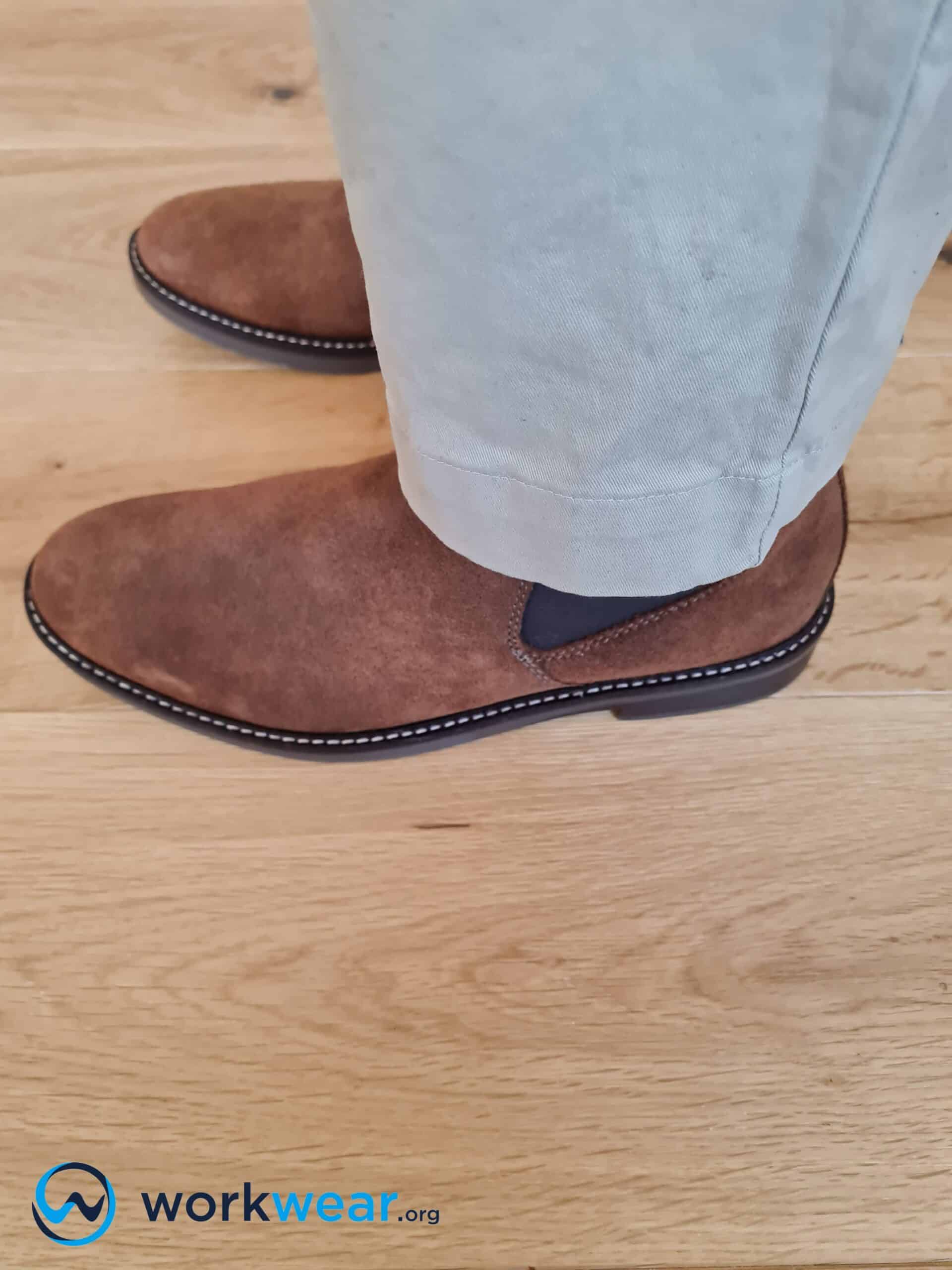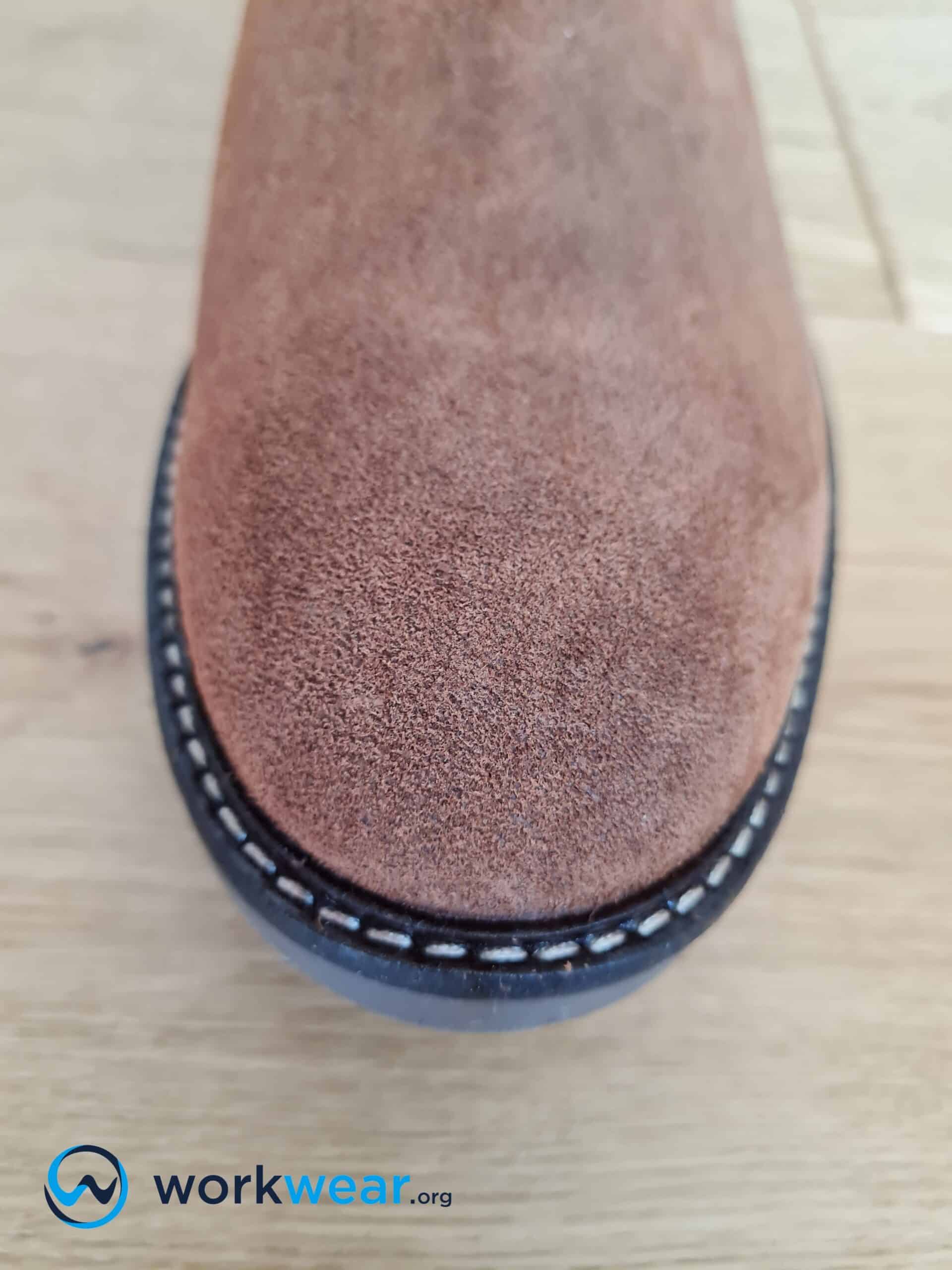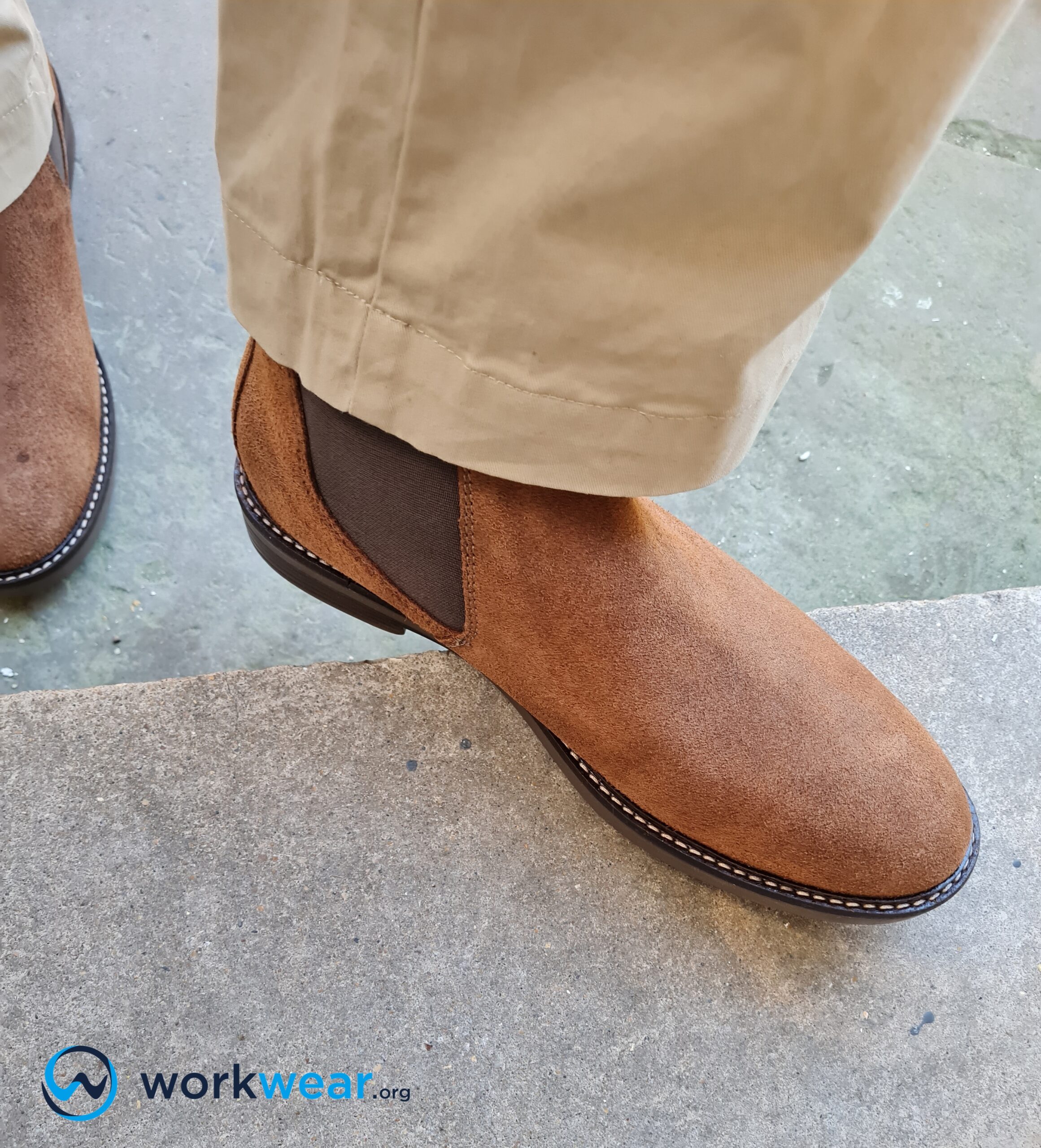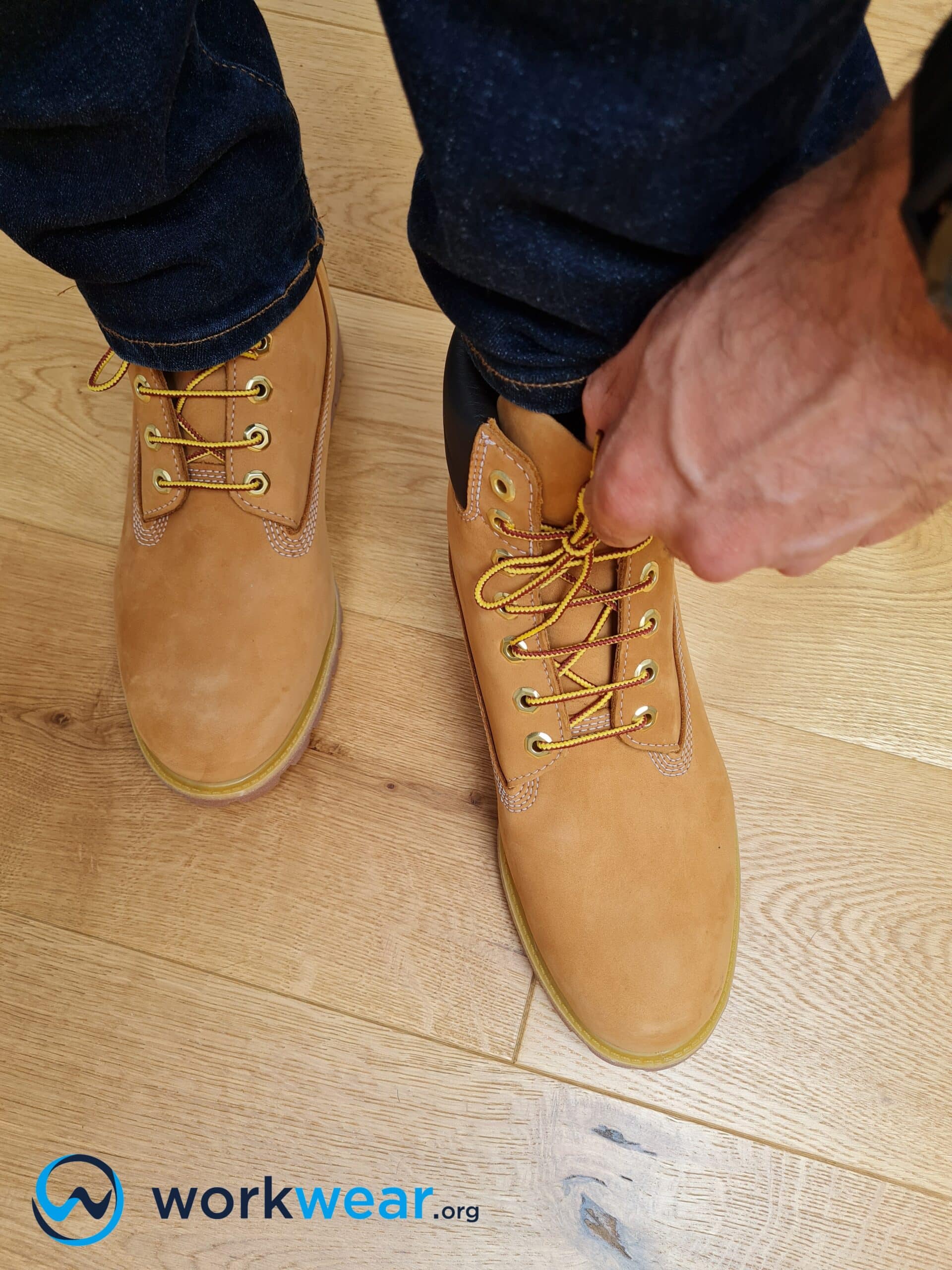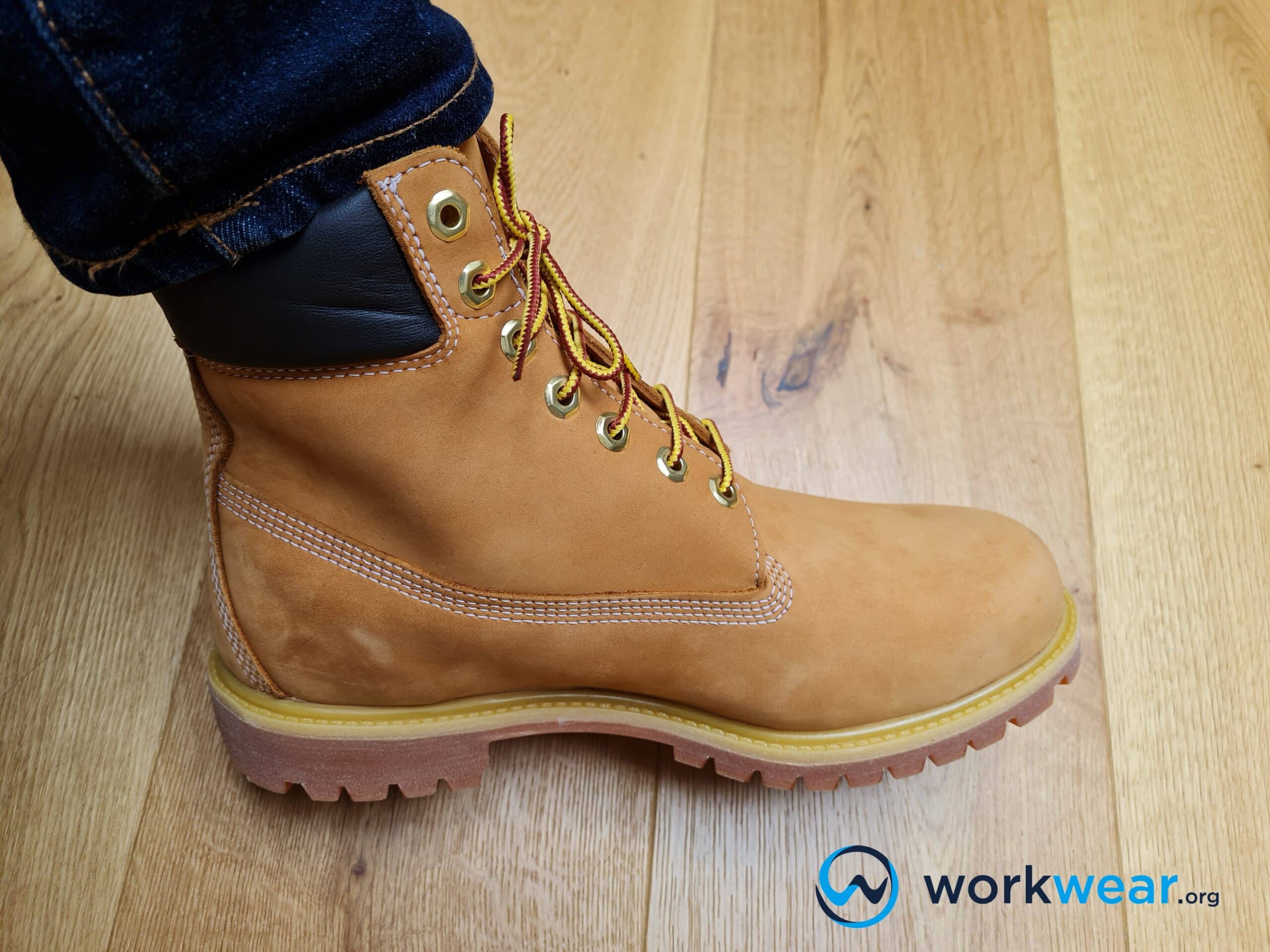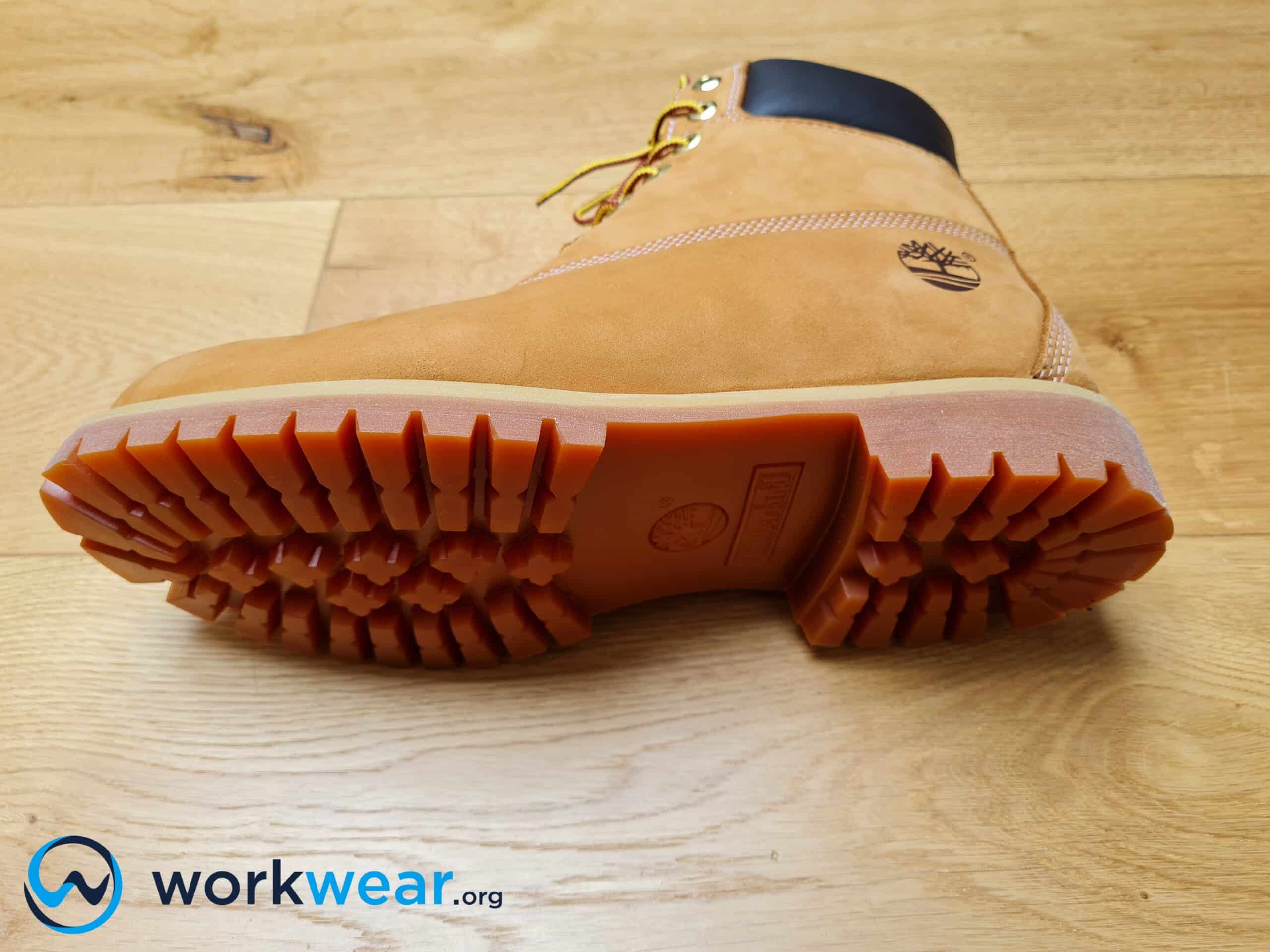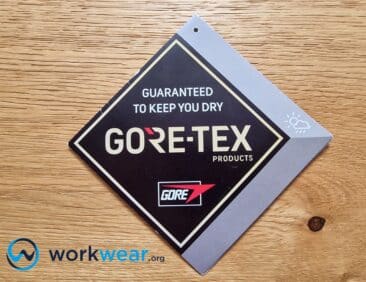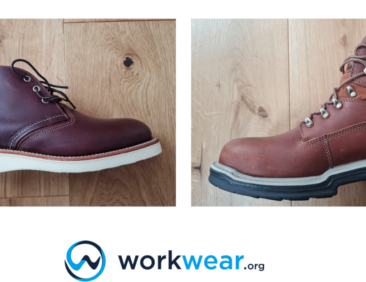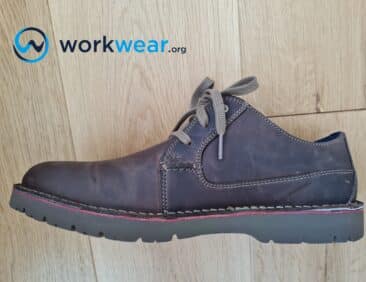Suede vs Nubuck
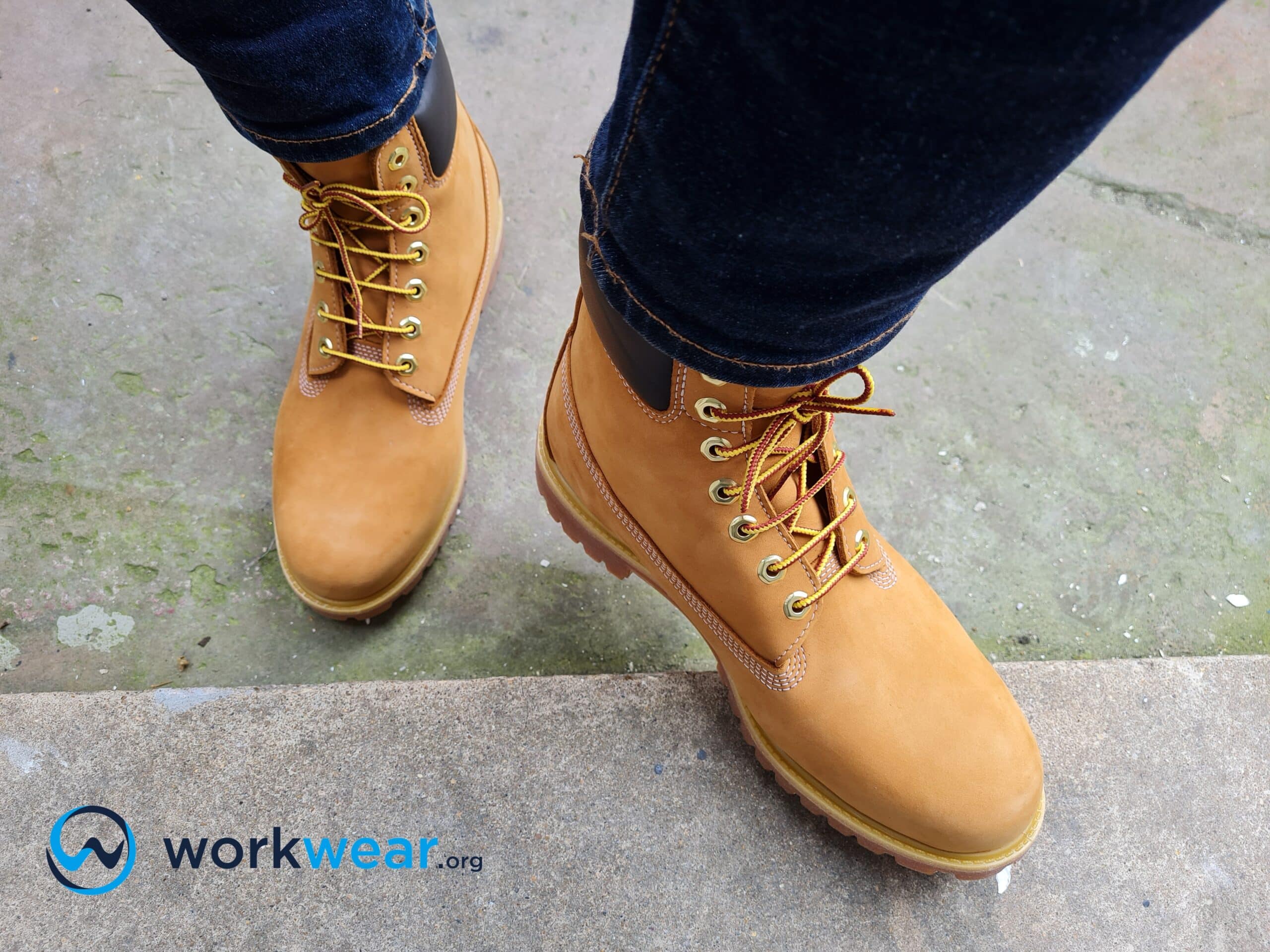
Smooth leather is the material that first comes to mind when discussing leather boots, but other variations – such as suede and nubuck – are just as suitable for specific purposes. Nubuck and suede may seem the same as they both have a fuzzy texture, resulting from the two materials being rubbed or sanded to remove the outer layer. In reality, these two different materials have unique characteristics, starting from where they’re sourced from the leather hide. Nubuck is made by sanding down the exterior layer of the leather hide, while suede comes from the sanded-down inner layer of the hide. In addition, more qualities set these materials apart, as discussed below. This article will give you the information you need to distinguish between the two materials used for work boots, empowering you to choose the best option that will bring the greatest benefits.
Key Takeaways
- Suede and nubuck almost look the same, but they both have characteristics that differentiate one from the other.
- These materials get their velvet-like finish from sanding and buffing, unlike full-grain leather, which retains a smooth texture.
- Suede develops a patina over time and is more affordable than nubuck – but it’s also thinner and less durable and has weaker liquid resistance than nubuck.
- Nubuck is thicker, more durable than suede, and breathable – but it can have imperfections on the surface, doesn’t develop a patina, and is typically pricier than suede.
- Suede and nubuck boots are great for jobs in indoor settings and can be used with smart-causal outfits – although they’re perfect for adding a stylish ruggedness to suits as well.
Suede
The suede is the product of sanding down the underside of the leather hide. It has a velvety texture that makes boots made with suede more enjoyable to touch than smooth leather. This texture lends a luxurious look and feels to the boots, making them ideal for occasions and settings that call for dressy or stylish footwear. In addition, the suede is pliable and easily moves along with the foot’s motion, so suede boots feel much more comfortable than those made with stiff, smooth leather.
However, as suede comes from the inside layer of the leather hide, which has less densely packed fibers, it’s significantly weaker than the nubuck from the outer layer.
Key Advantages of Suede
Lightweight
Suede is made from the inner layer of the leather hide, which has looser fibers, making it much lighter in weight than smooth leather, which has a more robust structure. In addition, the upper of suede boots are significantly thinner than smooth leather boots, so they don’t add much to the boot’s total weight.
Flexible
The suede has a pliable structure, allowing the boots made from this material to effortlessly follow the foot’s motion without causing any discomfort.
The material fits more closely to the skin and easily molds to the foot’s shape, resulting in a more comfortable and almost personalized fit. This flexibility is also why suede is considered ideal for products designed to fit closely to the skin, such as gloves.
Luxurious look and feel
The velvety soft texture of suede produces a luxe feel, making products made from this material – such as boots – more enjoyable to touch and use for various purposes.
The velvet-like finish also makes the boots look richer and more interesting compared to smooth leather footwear, so they’re excellent choices if you want to inject something different into your daily outfits.
Soft and delicate
The softness of suede lends a delicate dimension to boots. This makes suede boots a great canvas for accents, such as detailed stitching that can give a significant aesthetic boost. Suede is suitable for those who prefer their footwear to be soft enough for comfort and unrestricted mobility instead of being stiff and unyielding.
Develops a beautiful patina
Suede develops a patina over time, making the boots look lovingly used with regular use. The discoloration can add character to the footwear, although only some are keen on having this on their boots or shoes.
More affordable than nubuck
Typically, suede is more affordable than nubuck.
This is because nubuck – sourced from the tougher outer layer of the animal hide – is considered higher quality compared to suede crafted from the inside layer. With the lower price point, suede is the ideal choice for those who want soft, flexible, and luxe-feeling boots but don’t want to spend much on the experience.
No break-in period needed
Unlike work boots made from stiff leather, suede boots don’t need a break-in period before being used comfortably. This is because the material is naturally soft and pliable, adapting to the foot’s motion without any trouble. With suede boots, you don’t need to worry about the upper digging painfully into the feet with every step.
Key Disadvantages of Suede
Minimal/no water resistance
The fibers on the inner layer of the animal hide are loosely packed compared to the denser fibers of the outer layer. This results in suede offering minimal resistance to liquids, so the material can easily allow moisture in. As a result, some kinds of suede can have permanent marks when exposed to even a small amount of rain. As such, we won’t recommend suede boots for those who work outdoors in inclement weather or settings that are frequently exposed to moisture.
It’s worth noting that a variant called waxed suede is waterproof because it’s enhanced with waterproofing wax.
Thinner than nubuck
The less-dense interior layer of the leather hide results in suede having a thinner structure than nubuck. Unfortunately, when using suede boots, the feet can easily feel the faintest bumps against hard surfaces, so there’s not a lot of protection in case of unintentional impact.
Less durable than nubuck
Not only is suede thinner than nubuck, but it’s also less durable. Suede’s loosely packed structure doesn’t offer much resistance against moisture and is much less resistant to damage. This is especially true with suede boots that are used in settings that are exposed to abrasive materials.
There’s no doubt that suede boots look and feel fantastic, but they’re not the most reliable choices regarding lasting durability.
Easily attracts dirt
Suede has a porous structure where dust and other debris can easily accumulate. The surface of suede boots and shoes can progressively become dirtier as more dirt deposits build up. Regular cleaning needs to be done to maintain the material’s quality and prevent it from looking too dirty, especially with the boots are used regularly.
Uses of Suede
Suede boots are ideal for professionals who work mostly indoors or aren’t exposed to harsh environments or wet settings. They’re suitable for the following professions:
- Sales and marketing professionals
- Teachers/professors
- Hotel front office staff
- Advertising executives
Nubuck
Nubuck is also made from the leather hide’s full–grain section–the one facing outwards. This external layer is buffed to achieve a velvety smooth finish. As a result, it’s much more robust than the inner layer (where suede is crafted from), and nubuck exhibits the same durability when it’s used for boots and shoes, especially when compared to suede.
Nubuck has a thicker structure that offers stronger resistance to liquids, so moisture doesn’t seep into nubuck boots as easily as suede footwear.
The enhanced moisture resistance and strength of nubuck results in it being pricier than suede, so nubuck footwear may not be the best choice for those looking for the lowest-priced choices.
Key Advantages of Nubuck
Comfortable out of the box
Nubuck is a flexible material that doesn’t need to be broken in to be comfortable for walking. As a result, nubuck boots can be used straight out of the box, and they’ll feel completely comfortable – unlike smooth leather boots that need a break-in period to soften the rigid material.
Higher water resistance compared to suede
Nubuck has a higher level of liquid resistance than suede, although it’s not water-resistant or waterproof.
As the material is crafted from the same outer layer of the animal hide where full-grain leather comes from, it exhibits some of the liquid resistance delivered by the smooth leather.
Unlike suede, nubuck won’t easily be stained by small liquid splashes – but it’s still important to keep it away from moisture sources as heavy exposure can result in extensive damage. When exposed to a small amount of water or other liquids, nubuck leather will darken but eventually return to its original shade.
Breathable
The buffing process that gives nubuck its velvety finish also produces another advantage: breathability. Nubuck is much more breathable than synthetic leather, allowing the air to circulate inside the boots to prevent an overheated feeling even with long hours of continuous use.
Remarkably soft and flexible
Nubuck leather is exceptionally soft, with a velvet-like finish giving a lavish feel that gives functional and aesthetic benefits. The softness of nubuck boots makes them completely comfortable to wear, with the material easily flexing with every step. In addition, nubuck doesn’t restrict the foot’s motion, making walking and moving around easier.
Luxurious appearance
Nubuck has raised fibers on the surface that give it a velvety finish. It looks plush and luxurious, making it a superb choice for boots and shoes that give an edgy vibe to casual ensembles. Even if nubuck boots are more often considered for casual wear, the richness of the material also goes well with more formal attire.
Thicker than suede
The sanding process that gives nubuck its soft, luxurious texture makes it thinner than full-grain leather – but it’s still much thicker than suede. The thicker structure offers more protection for the feet (compared to suede boots), keeping them safe against extreme bruising when the boots bump into hard surfaces.
Durable
Nubuck comes from the same layer of animal hide from where the full-grain leather is sourced.
As such, it still has some of the strength and durability of full-grain leather, even after it’s buffed to create a velvety texture.
Nubuck’s thicker profile makes it more resistant to damage than suede and resists water damage better than suede.
Key Disadvantages of Nubuck
Pricier compared to suede
Nubuck is sourced from the external layer of the leather hide, where full-grain leather also originates. This layer has higher quality than the inner layer, resulting in nubuck (typically) having a higher price than suede. In addition, although suede and nubuck have virtually the same appearance and velvety softness, nubuck is thicker and more durable – qualities that contribute to the material’s the higher price point.
Can have imperfections
Nubuck is made from the outer layer of the leather hide that’s more exposed, which means it can have imperfections throughout the structure. Manufacturers may remedy the blemishes by using stains or dyes to achieve a smoother finish, although some people consider the flaws as enhancements to the boots’ character.
Doesn’t develop a patina
Nubuck doesn’t form a patina, unlike suede. This may be a minor issue, but some look forward to this mark of the boots’ character developing over time, as the boots are used lovingly for various purposes.
Traps dirt easily
Like suede, nubuck’s surface features raised fibers that easily trap dirt.
This means that boots and shoes made from nubuck can quickly become dirty even with minimal exposure to dust and other substances that can accumulate on the surface.
Uses of Nubuck
Nubuck boots exude sophistication, making them suitable for events or settings that call for elegant attire – although they work just as well for daily use when you want to add a stylish element to your outfit. They’re superb choices for the following professions:
- Models
- Lawyers
- Real estate executives
- HR staff
Suede vs Nubuck – Comparison
|
Pros |
Cons |
|
|---|---|---|
| Suede |
|
|
| Nubuck |
|
|
Our Testing Experience
We had the chance to try out high-quality suede and nubuck leather boots that almost have the same finish while offering distinct characteristics. The Clarks Paulson Up Chelsea Boot features a suede upper that easily along with each step, making it much more comfortable to use than stiff leather boots. In addition, the suede finish adds a rugged appeal that goes well with the pull-up design, making this boot a great addition to smart-casual outfits. This book is well-designed and has a premium look, with contrasting stitching and stretchable side panels to accommodate the foot’s entry effortlessly. The OrthoLite footbed adds a soft layer inside for even better comfort. However, this boot isn’t waterproof, so it’s unsuitable for use outdoors in bad weather and wet conditions.
Meanwhile, the classic Timberland Premium 6-Inch Waterproof Boot that’s made with nubuck leather sourced from an environmentally responsible tannery. It has a seam-sealed waterproof construction to block liquids to protect the foot against uncomfortable wetness. The densely cushioned collar helps secure the ankle and offers protection against painful chafing. In addition, this boot uses exclusive Anti-Fatigue technology to absorb shock, making walking easier for longer periods without suffering from aching feet. However, even with the soft, premium feel of the nubuck leather, this boot is a bit difficult to put on and remove because of how it’s designed.
Conclusion
Suede and nubuck have similar features, so it’s easy to get confused when it’s time to choose between the two materials for boots and shoes.
There are qualities that both materials offer – such as the velvet-like finish, out-of-the-box comfort, and flexibility – but there are characteristics that set them apart as well. For example, suede develops a beautiful patina with time and has a lower price point than nubuck. However, it’s also thinner and less durable than nubuck and has weaker liquid resistance. On the other hand, nubuck is breathable, has stronger water resistance, and is thicker and more durable than suede – but it can have flaws, doesn’t develop a patina, and is more expensive than suede. Both materials inject a rich quality to boots and shoes with their velvety textures, but it’s beneficial to know the qualities that differentiate one choice from the other. This way, you’ll be able to maximize the benefits when you choose the material that can best address your needs and preferences.
FAQs
- Is water good for cleaning suede and nubuck boots?
- No – liquids can cause damage to both suede and nubuck boots. To clean the boots, it’s best to use a brush to remove the trapped dirt on the surface without damaging the material. For more thorough cleaning, it’s a great idea to look for products specifically designed to remove the dirt on suede or nubuck.
- Do suede and nubuck boots need to be conditioned?
- Generally, nubuck and suede boots don’t need to be conditioned, as simple brushing is enough to clean and maintain the quality of these materials. Conditioning oils or creams can also darken or damage the materials, so it’s best to use these products altogether.
- Can suede be enhanced to make it stronger?
- Yes – suede can be made stronger by treating it with stain and water repellent. These products create a protective barrier over the suede upper, giving it a stronger resistance to liquid damage and staining to keep the boots looking and performing well for a longer period.
- Is it possible to make suede and nubuck boots waterproof?
- Yes – waterproofing products can be applied to nubuck and suede boots to make them highly water-resistant or waterproof.
